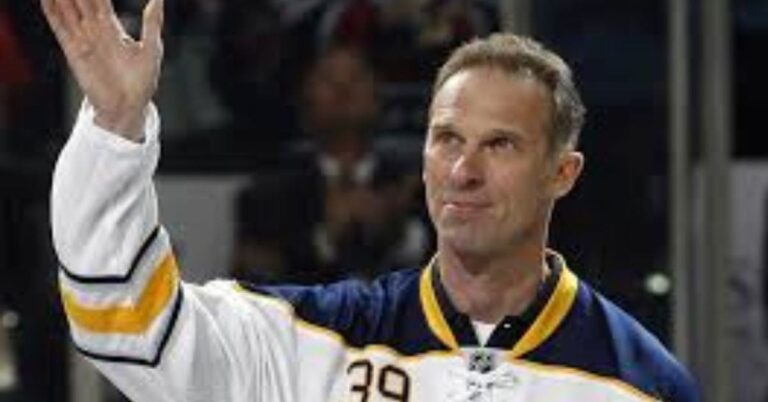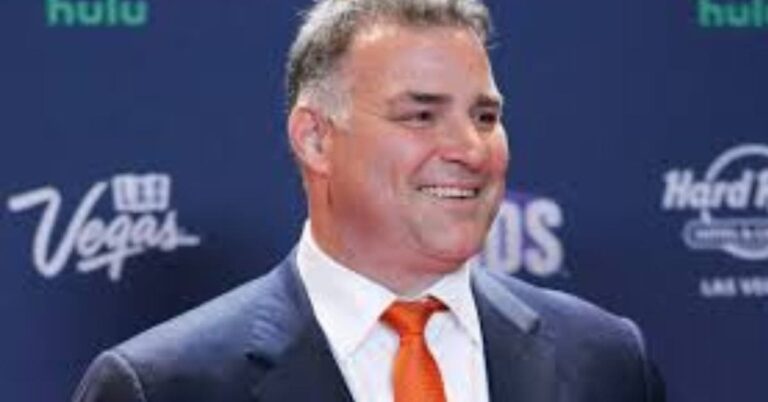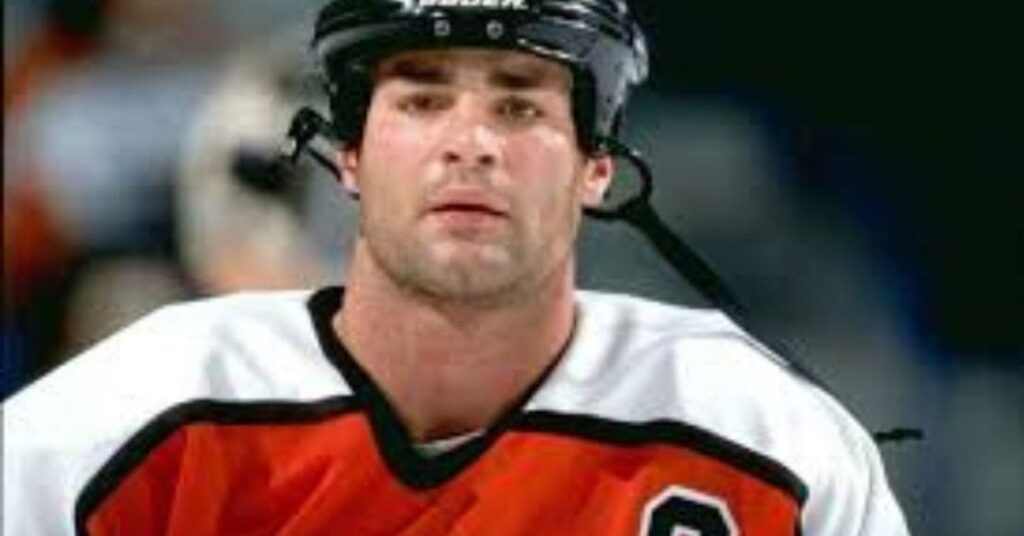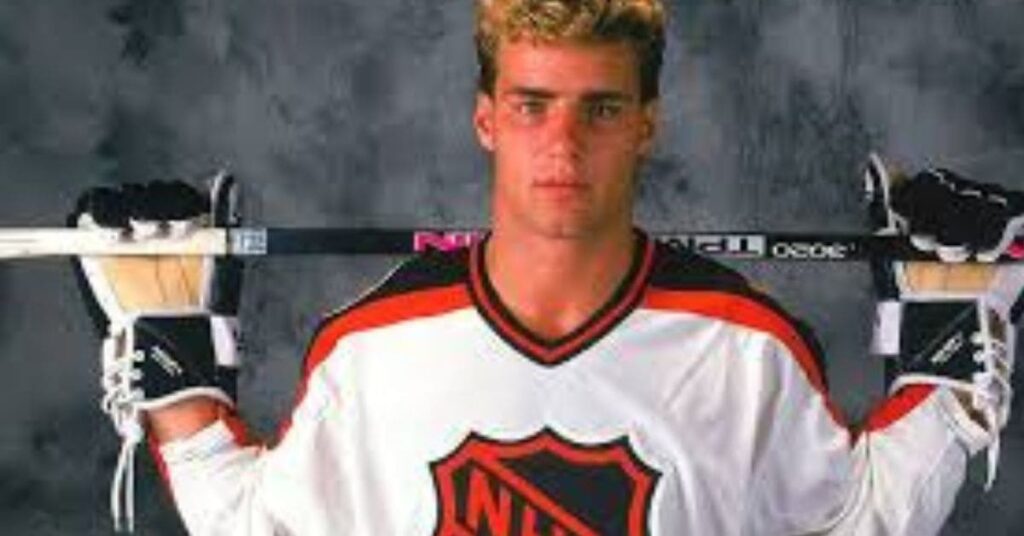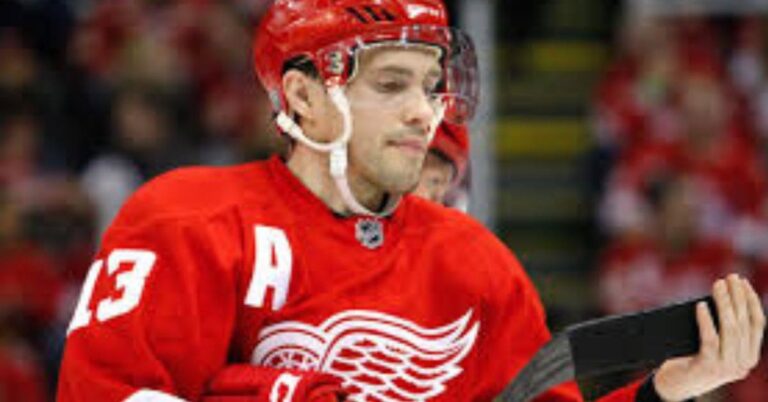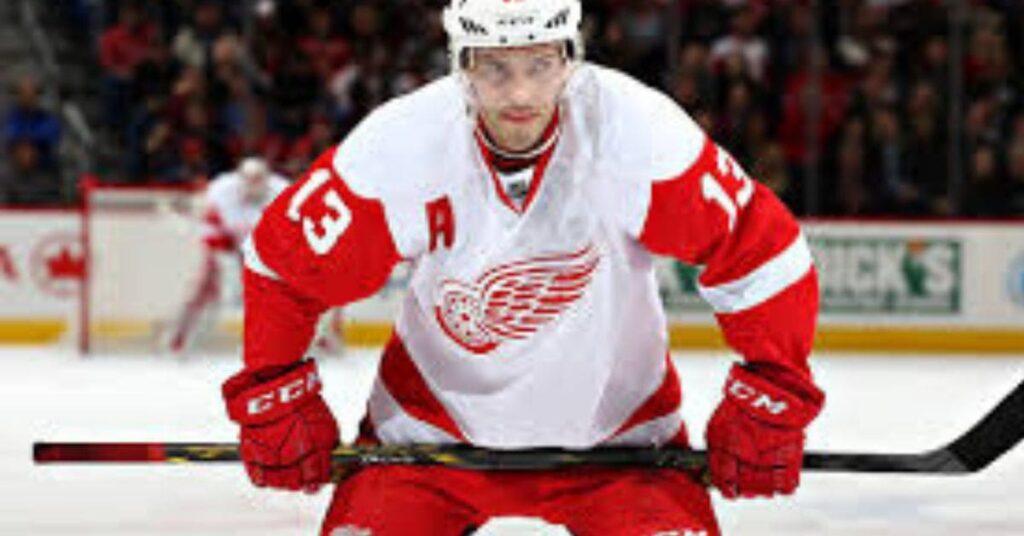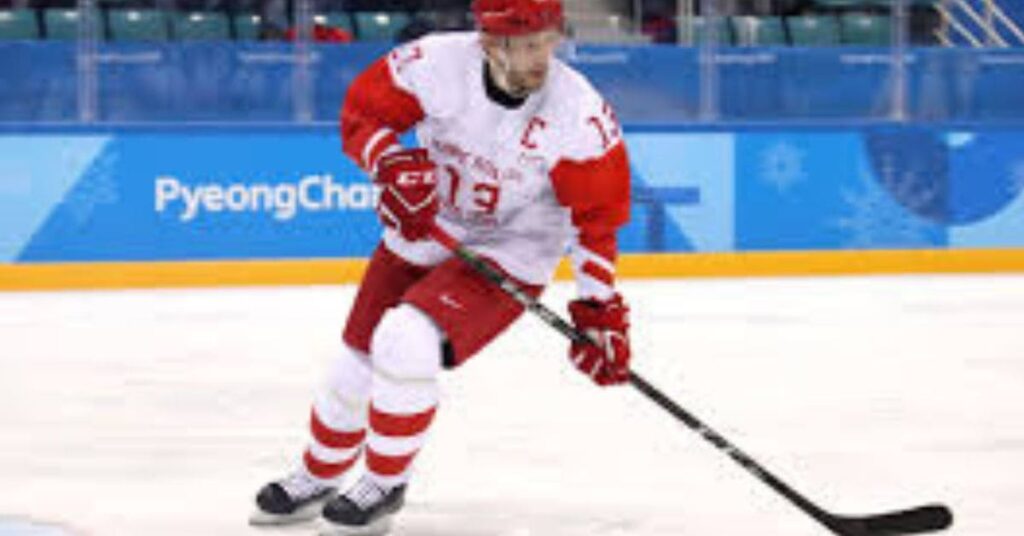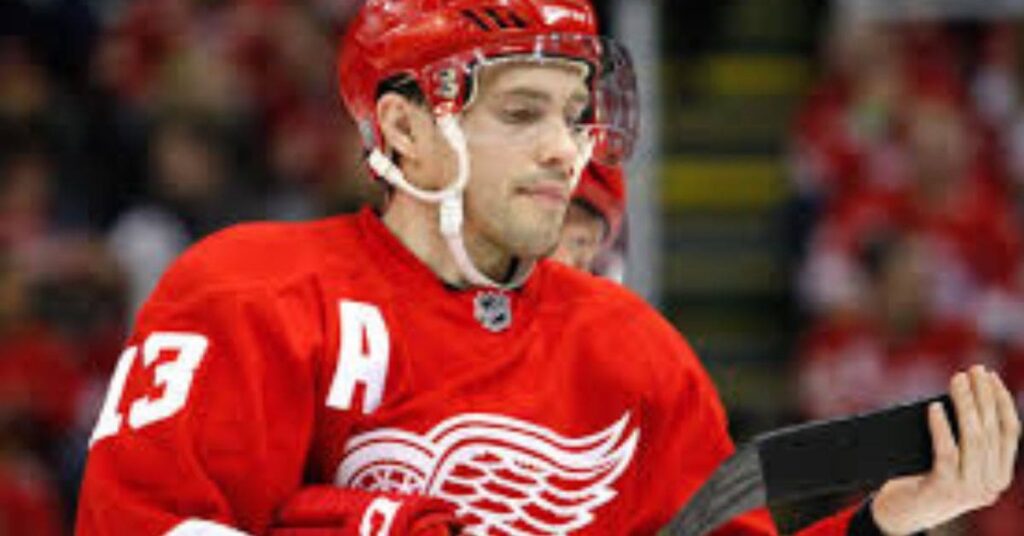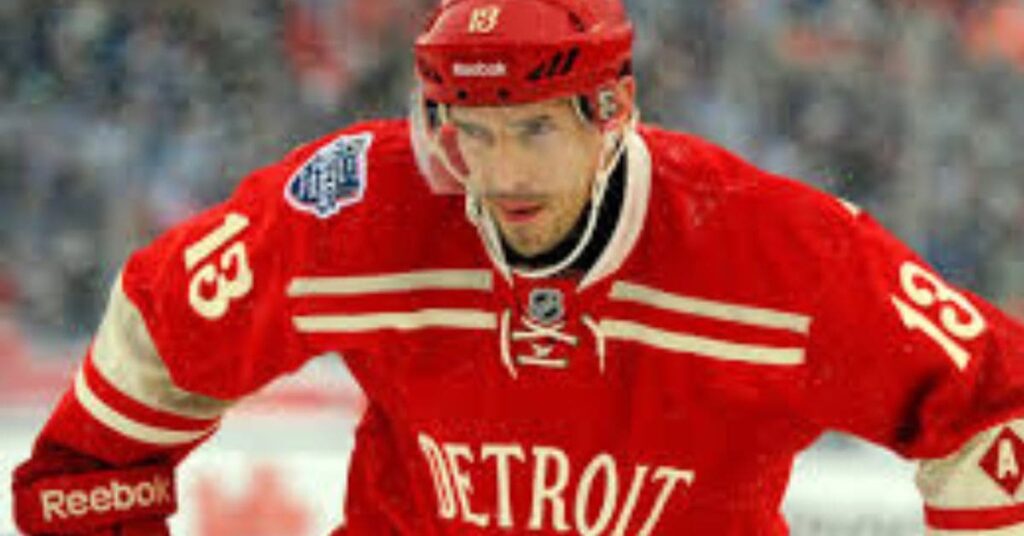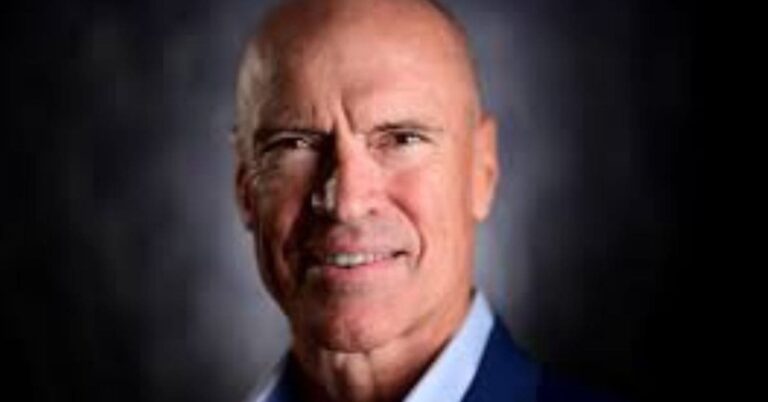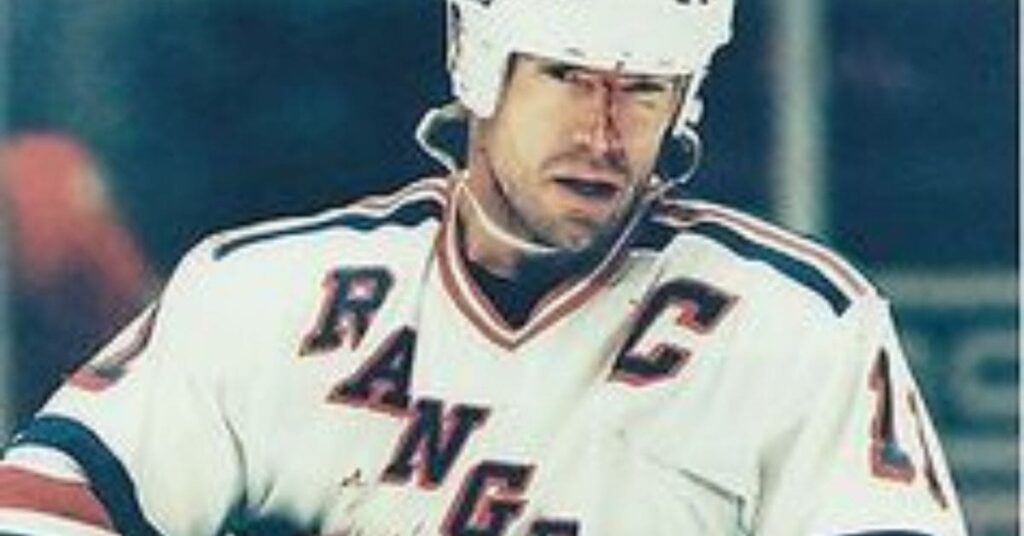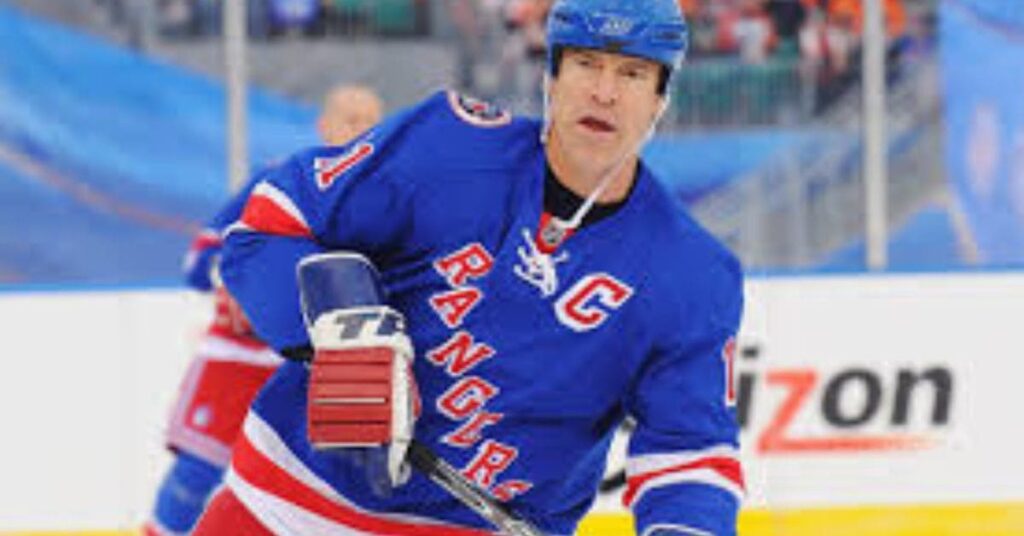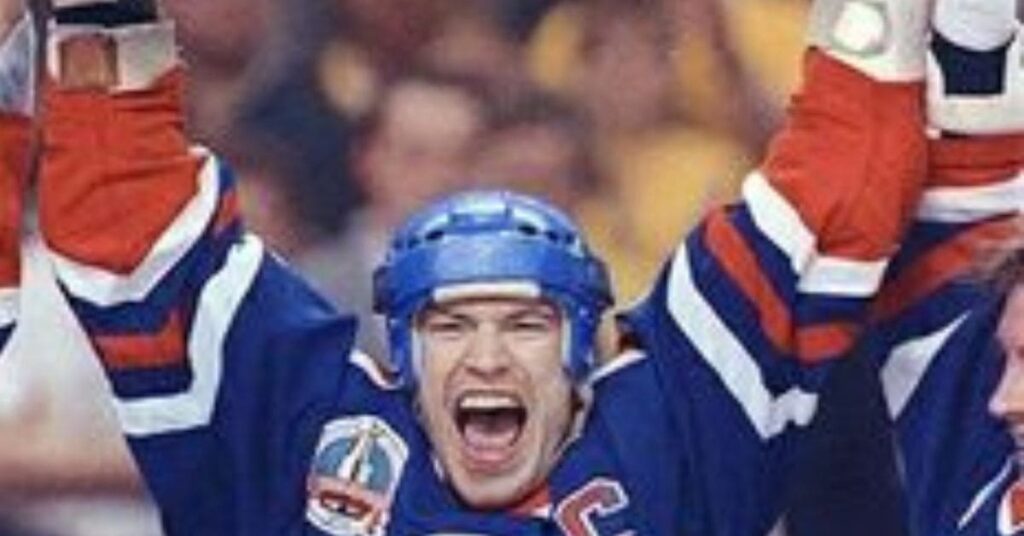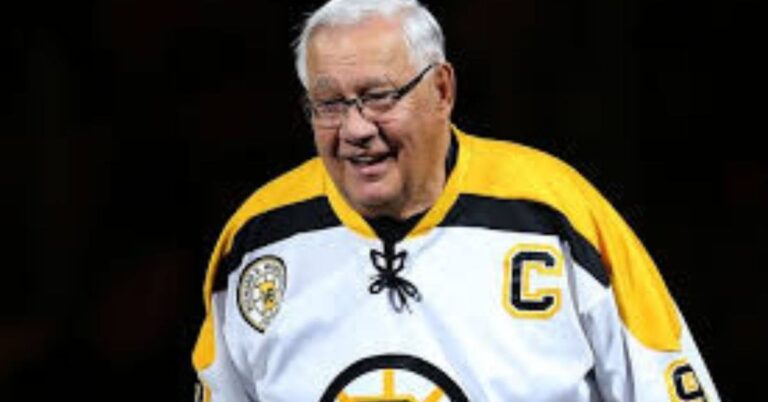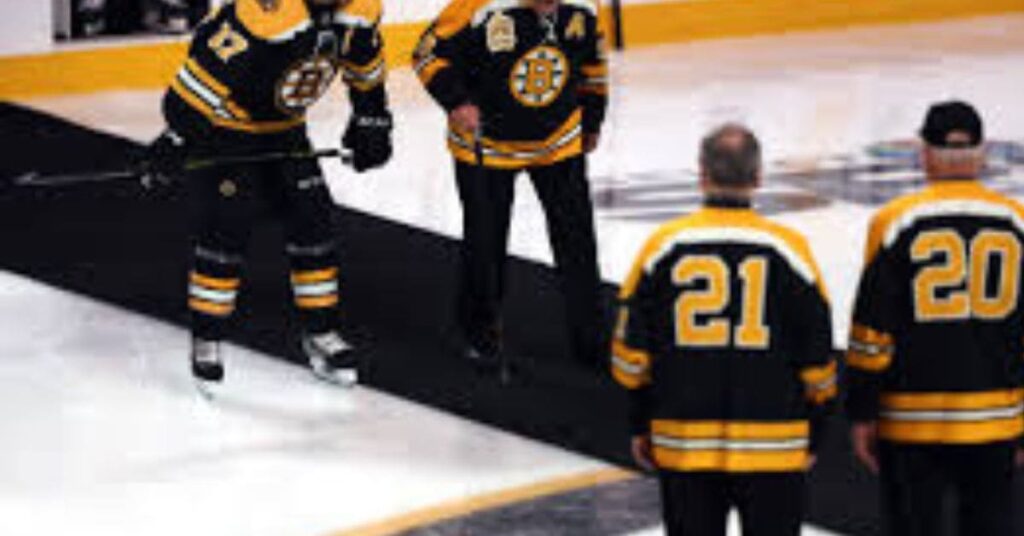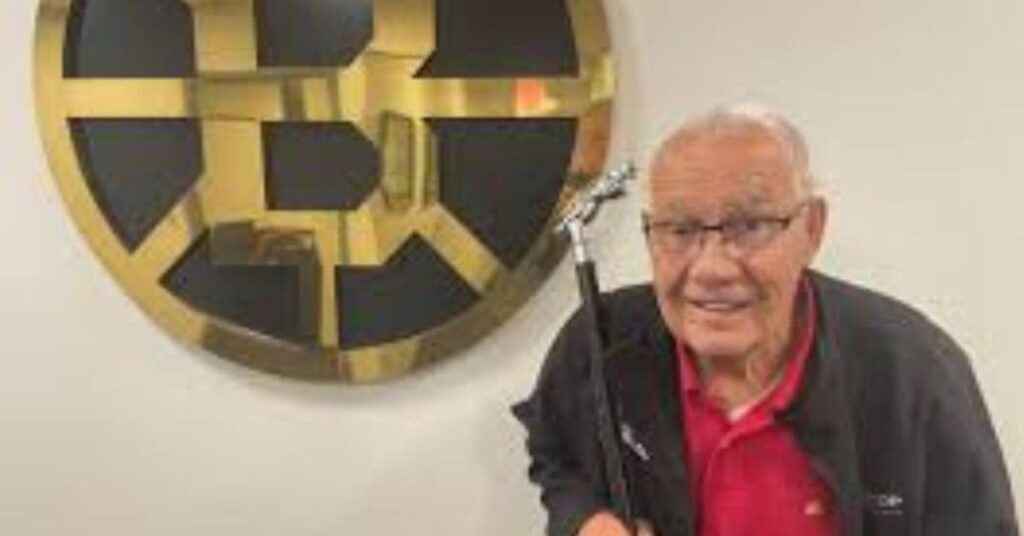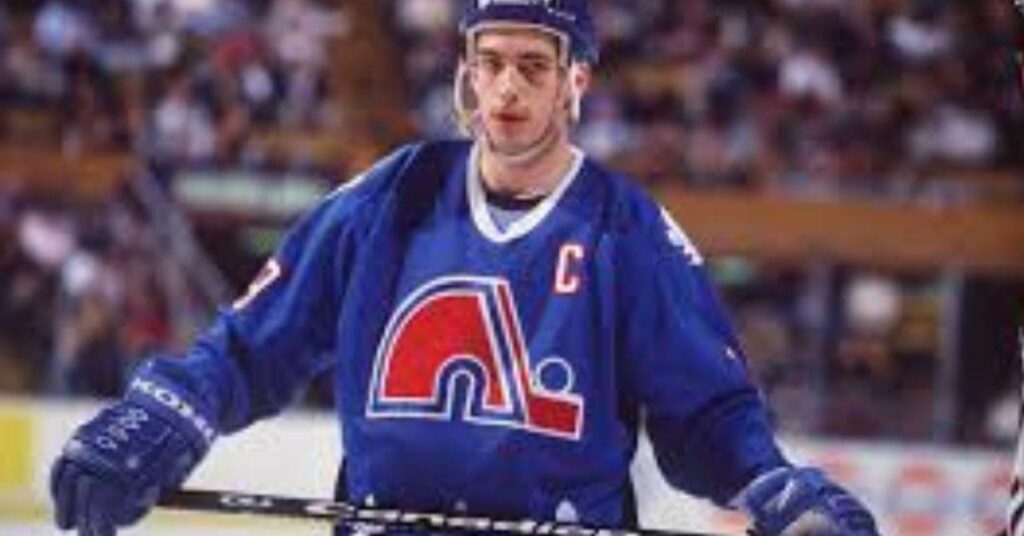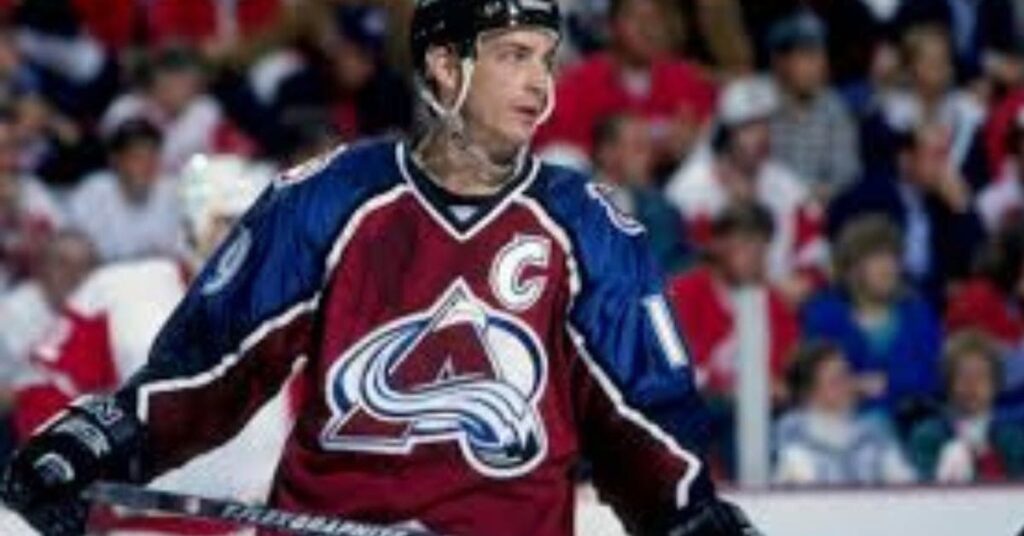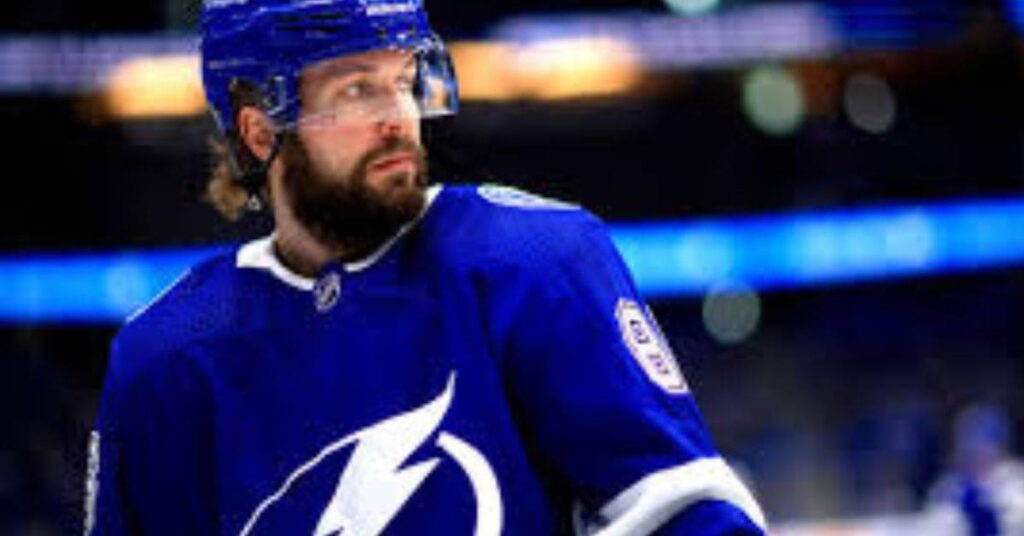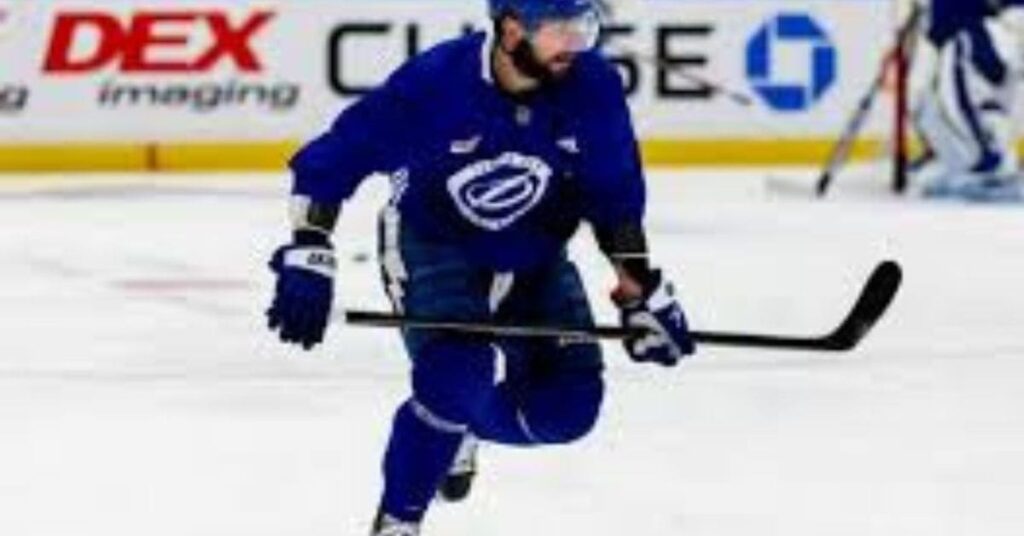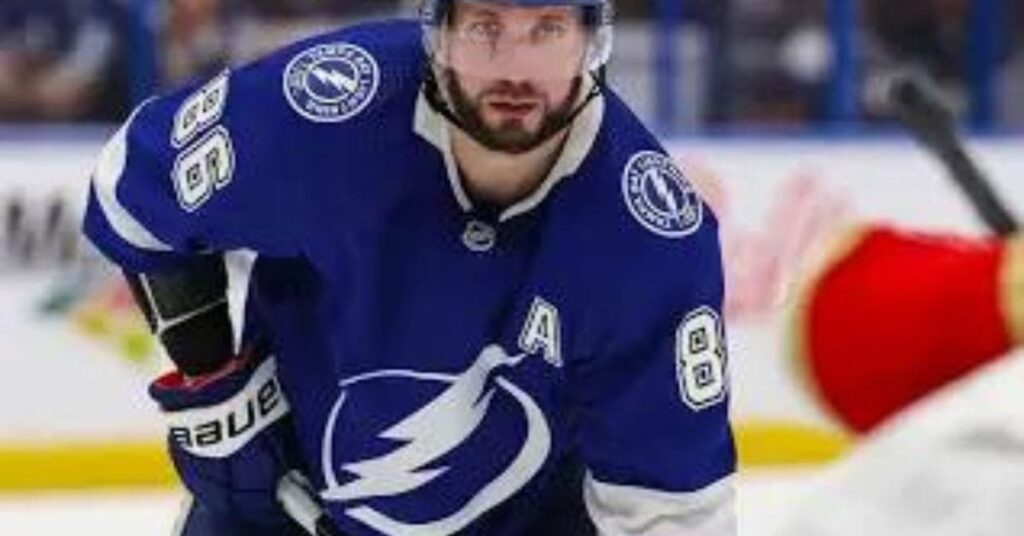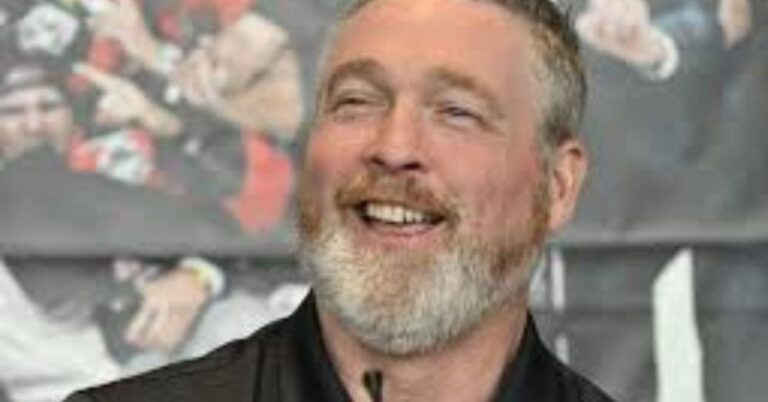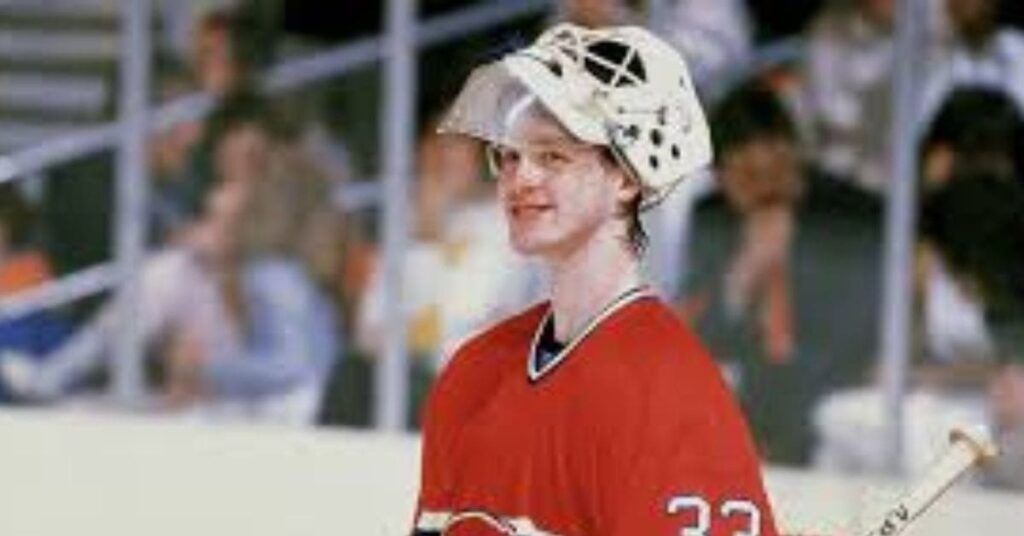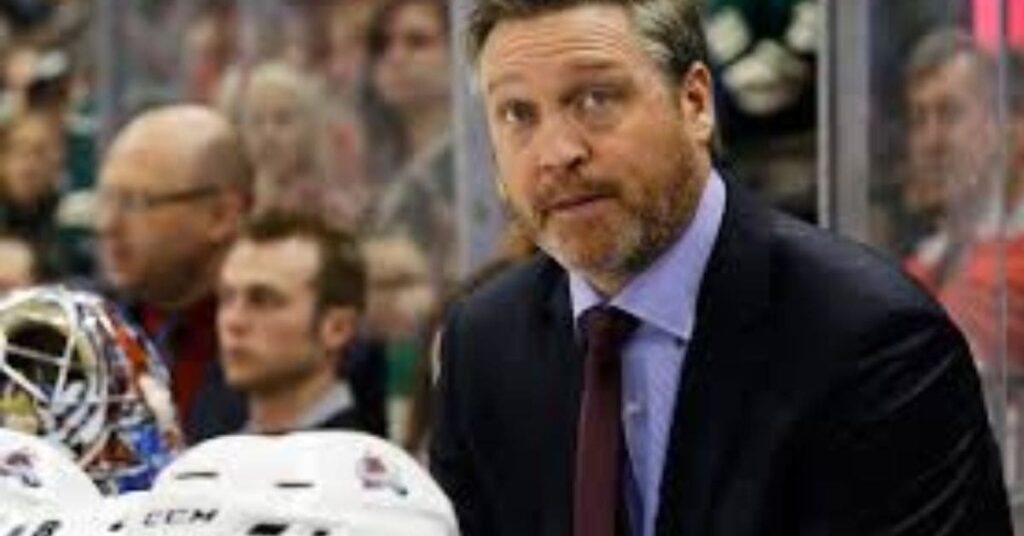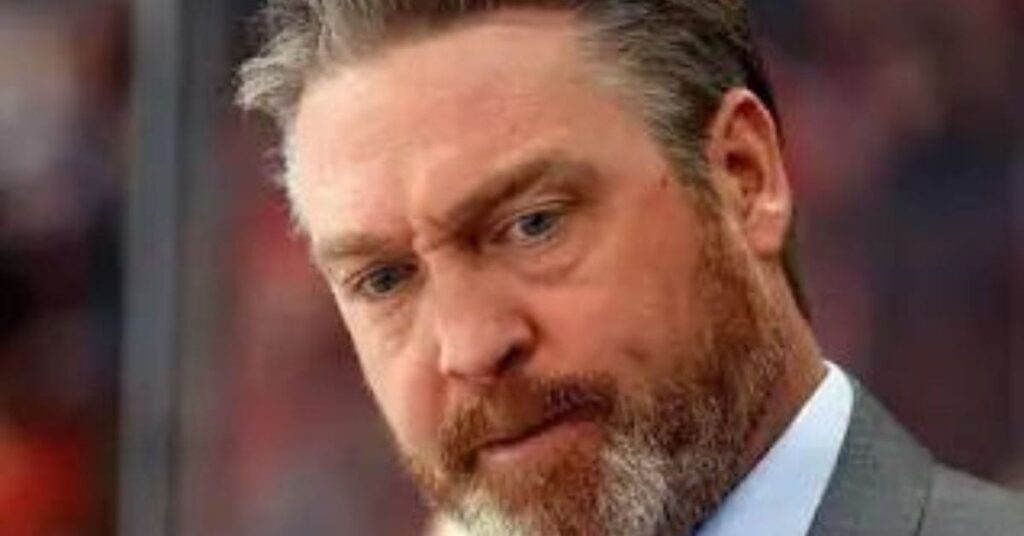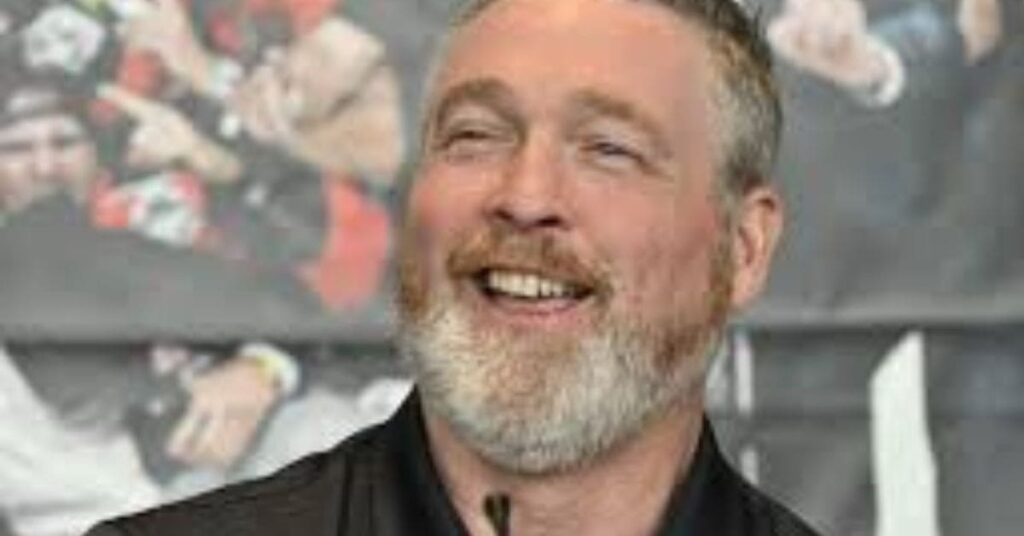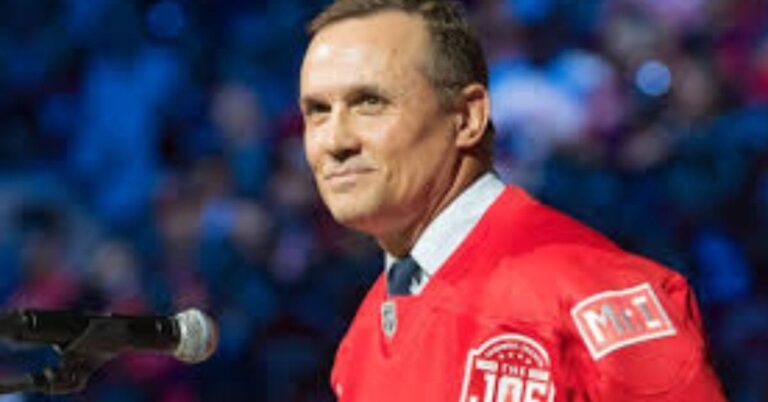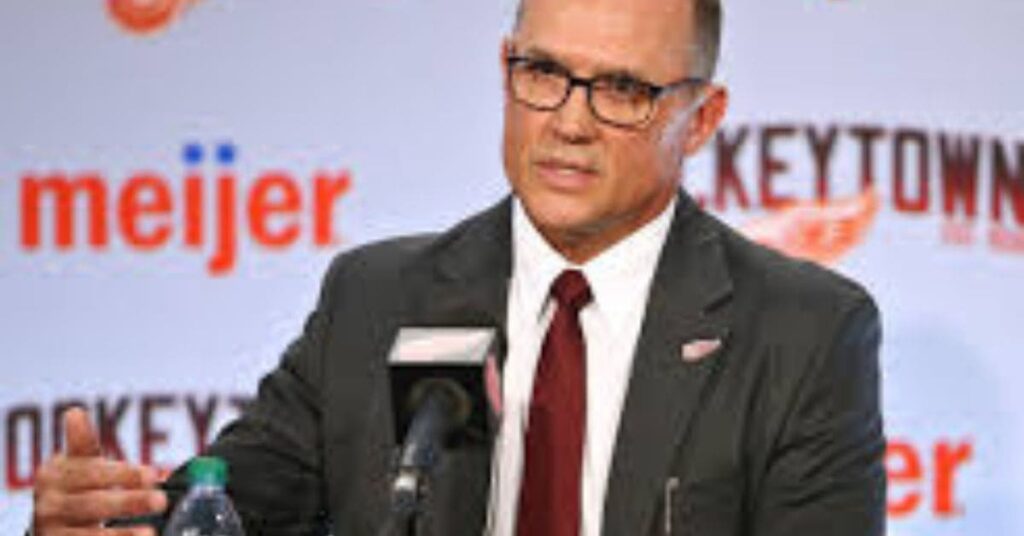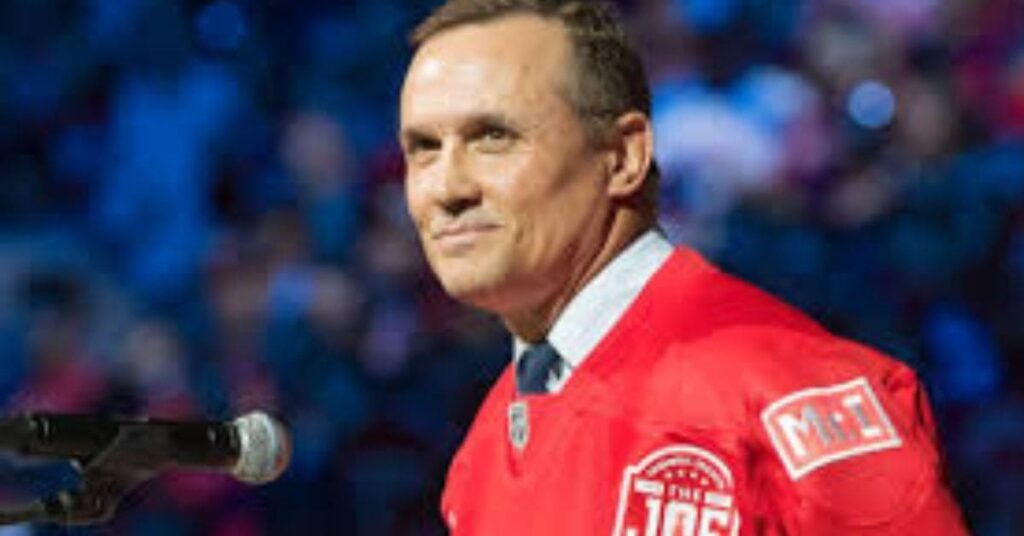Dominik Hašek, known as “The Dominator,” is celebrated as one of the greatest goaltenders in ice hockey history. He was born on January 29, 1965, in Pardubice, Czechoslovakia. Hašek’s career spanned three decades, during which he redefined the role of a goaltender with his unorthodox yet highly effective style.
Hašek’s skills between the pipes earned him six Vezina Trophies and two Hart Memorial Trophies, making him the first goaltender to win the latter multiple times. His storied performances in the NHL, particularly with the Buffalo Sabres and Detroit Red Wings, consolidated his reputation, which led to two Stanley Cup championships.
Internationally, he led the Czech Republic to a historic gold medal at the 1998 Winter Olympics and was inducted into the Hockey Hall of Fame in 2014. Get to know more about Dominik in this article, his biography, age, career, net worth and awards.
Table of Contents
Who is Dominik Hasek?
Dominik Hašek, born on January 29, 1965, in Pardubice, Czechoslovakia, is a former professional ice hockey goaltender who is renowned for his exceptional career and unique playing style. Measuring at 6 feet 1 inch tall and weighing 166 pounds, Hašek played as a goaltender and was known for catching with his left hand.
He began his professional career in the Czechoslovak Extraliga with HC Pardubice at the age of 16, becoming the youngest player in league history at the time. He later played for the army team HC Dukla Jihlava and earned several awards, including the Golden Hockey Stick for the league’s Most Valuable Player three times and the Goaltender of the Year award four consecutive times from 1986 to 1990.
Hašek was drafted by the Chicago Blackhawks in the 10th round of the 1983 NHL Entry Draft, 199th overall. However, due to the political climate behind the Iron Curtain, he did not make his NHL debut until the 1990–91 season, seven years later. Before joining the NHL, Hašek played for the Indianapolis Ice of the International Hockey League (IHL). His NHL career took off when he was traded to the Buffalo Sabres in 1992, where he quickly became one of the league’s top goaltenders.
During his time with the Sabres, Hašek won six Vezina Trophies as the NHL’s best goaltender and two Hart Memorial Trophies as the league’s most valuable player, becoming the first goaltender to win the latter multiple times.
Internationally, Hašek represented both Czechoslovakia and the Czech Republic. He played in the 1998 Winter Olympics in Nagano, Japan, leading the Czech national team to its first and only Olympic gold medal in men’s ice hockey. He also participated in the 2006 Winter Olympics in Turin, Italy, where he played briefly before an injury, and the team went on to win a bronze medal. His international honors include a gold medal in the 1998 Winter Olympics and multiple medals in the World Championships and World Junior Championships.
In the NHL, Hašek also played for the Detroit Red Wings, with whom he won two Stanley Cup championships, as well as the Ottawa Senators. Known for his unorthodox goaltending style, Hašek’s techniques included using his blocker hand to cover the puck and making dramatic, acrobatic saves. He holds the highest career save percentage (.9223) and ranks seventh in goals-against average (2.202) in the modern era.
During his career, Hašek set numerous records, including the most shutouts in a single postseason with six in 2002 and the highest save percentage in a season twice while with the Sabres.
He retired from the NHL in 2008, but returned to professional hockey in Europe shortly after. He signed with HC Pardubice of the Czech Extraliga in 2009, leading the team to a league title in the 2009-10 season. Hašek then moved to HC Spartak Moscow of the Kontinental Hockey League (KHL) for the 2010-11 season. Following his stint in the KHL, Hašek contemplated a return to the NHL, but ultimately announced his final retirement from professional hockey on October 9, 2012.
Hašek was known for his strict conditioning regimen and flexibility, which allowed him to make spectacular saves. Throughout his career, he remained one of the last goaltenders to use the helmet-and-cage mask rather than the more modern hybrid goaltender mask. His innovative and unorthodox style earned him the nickname “The Dominator” and made him a favorite among fans.
Hašek’s contributions included philanthropic efforts such as founding the Dominik Hašek Youth Hockey League/Hašek’s Heroes, an organization aimed at helping underprivileged children in Buffalo play hockey. He also briefly ventured into the business world with a sportswear brand named Dominator Clothing, though it was short-lived.
Hašek’s personal life saw him marrying Alena, with whom he had two children, Michael and Dominika. His daughter Dominika became the lead singer of the electro-pop band We Are Domi, which represented the Czech Republic in the Eurovision Song Contest 2022. Hašek and Alena divorced in 2012 after 23 years of marriage.
Hašek earned numerous awards and recognition. He was inducted into the Hockey Hall of Fame in 2014, the Czech Ice Hockey Hall of Fame, and the IIHF Hall of Fame. His number 39 jersey was retired by both the Buffalo Sabres and HC Pardubice. In 2017, he was named one of the ‘100 Greatest NHL Players’ in history.
Hašek’s track record is marked by his groundbreaking career, his distinctive goaltending style, and his contributions to the sport. His records and honors attest to his status as one of the greatest goaltenders in the history of ice hockey.
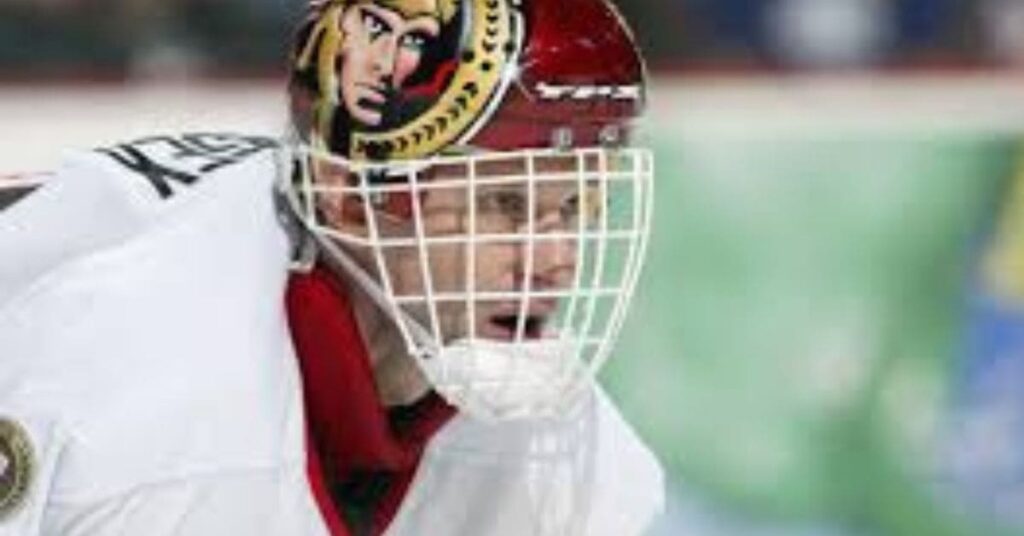
What is Dominik Hasek’s age, height, and weight?
Dominik Hašek was born on January 29, 1965. As of now, he is 59 years old. He is 6 feet 1 inch (185 cm) tall and weighs 166 pounds (75 kg).
What is Dominik Hasek’s Nationality and Ethnicity?
Dominik Hašek is Czech by nationality. He was born in Pardubice, which was part of Czechoslovakia at the time. Ethnically, he is Czech.
What is Dominik Hasek’s profession?
Dominik Hašek is a former professional ice hockey goaltender, widely regarded as one of the best in the history of the sport. His professional career started from 1980 to 2011. During this period, he enjoyed significant success both in the National Hockey League (NHL) and on the international stage.
Hašek began playing hockey at a young age in his hometown of Pardubice, Czechoslovakia. At just 16, he joined the top hockey league in the country, the Czechoslovak Extraliga, playing for HC Pardubice. During his time with Pardubice, he became the youngest player to compete at the professional level.
He helped his team secure league titles in 1987 and 1989. During his mandatory military service, he played for the army team, HC Dukla Jihlava, further honing his skills. Hašek’s performances in the Extraliga earned him the Golden Hockey Stick award as the league’s most valuable player in 1987, 1989, and 1990. He was also named Goaltender of the Year for four consecutive years from 1986 to 1990.
NHL Career:
Hašek was drafted by the Chicago Blackhawks in the 10th round of the 1983 NHL Entry Draft, 199th overall. However, his debut in the NHL did not come until the 1990-91 season, due to the difficulties in bringing players over from behind the Iron Curtain. He spent parts of two seasons with the Indianapolis Ice of the International Hockey League (IHL) before joining the Blackhawks.
After limited opportunities in Chicago, Hašek was traded to the Buffalo Sabres in 1992, where his career truly flourished. With the Sabres, Hašek earned the nickname “The Dominator” due to his exceptional goaltending. From 1993 to 2001, he won six Vezina Trophies as the NHL’s best goaltender and two Hart Memorial Trophies as the league’s most valuable player.
In 2001, Hašek joined the Detroit Red Wings, where he won his first Stanley Cup in 2002, becoming the first European-trained starting goaltender to do so. He briefly retired in 2002 but returned to the Red Wings in 2003, and after another stint with the Ottawa Senators, rejoined Detroit to win a second Stanley Cup in 2008. Hašek’s NHL career concluded with 389 wins, a career save percentage of .922 (the highest at the time), and numerous records for shutouts and goals against average.
International Career:
Hašek’s international career is equally illustrious. Representing Czechoslovakia and later the Czech Republic, he participated in multiple World Championships, World Junior Championships, and Winter Olympics. His most notable international achievement came at the 1998 Winter Olympics in Nagano, Japan, where he led the Czech Republic to its first-ever gold medal in ice hockey. Hašek was instrumental in this victory, allowing only six goals throughout the tournament and shutting out Russia in the final. He also earned a bronze medal at the 2006 Turin Winter Olympics, despite playing only briefly due to injury.
Final Years and Retirement:
After leaving the NHL, Hašek returned to Europe, playing for HC Pardubice and later HC Spartak Moscow in the Kontinental Hockey League (KHL). He continued to demonstrate his elite skills, leading Pardubice to another league title in 2010. Hašek officially retired from professional hockey on October 9, 2012.
Post-Retirement and Legacy:
Following his retirement, Hašek was inducted into the Hockey Hall of Fame in 2014. He is also a member of the Czech Ice Hockey Hall of Fame and the IIHF Hall of Fame. His number 39 jersey was retired by both the Buffalo Sabres and HC Pardubice. Hašek’s career is celebrated for his unorthodox playing style, exceptional flexibility, and groundbreaking success.
| Team | Years | Key Milestones |
|---|---|---|
| HC Pardubice | 1980-1989 | – Youngest player in Czechoslovak Extraliga – League titles in 1987 and 1989 |
| HC Dukla Jihlava | 1989-1990 | – Played during military service |
| Chicago Blackhawks | 1990-1992 | – NHL debut |
| Indianapolis Ice (IHL) | 1990-1992 | – Developed skills in the International Hockey League |
| Buffalo Sabres | 1992-2001 | – Six Vezina Trophies – Two Hart Memorial Trophies – “The Dominator” nickname -Numerous records |
| Detroit Red Wings | 2001-2002 | – First Stanley Cup win in 2002 |
| Detroit Red Wings | 2003-2004 | – Brief return to the NHL |
| Ottawa Senators | 2005-2006 | – Return to NHL after lockout season |
| Detroit Red Wings | 2006-2008 | – Second Stanley Cup win in 2008 |
| HC Pardubice | 2009-2010 | – Led team to league title |
| HC Spartak Moscow (KHL) | 2010-2011 | – Continued professional career in the KHL |
International Career Milestones:
| Tournament | Years | Key Milestones |
|---|---|---|
| World Junior Championships | 1983, 1984, 1985 | – Represented Czechoslovakia |
| World Championships | Various (1986-2004) | – Represented Czechoslovakia and later the Czech Republic |
| Winter Olympics | 1998, 2002, 2006 | – Gold medal in 1998 (Nagano) – Bronze medal in 2006 (Turin) |
What is Dominik Hasek’s current world ranking?
Hašek’s career save percentage of .922 remains the highest in NHL history.
Who are Dominik Hasek’s Parents?
Dominik Hašek’s parents are Jan Hašek and Miroslava Hašek. His father, Jan, was a school teacher, and his mother, Miroslava, was a shop assistant.
Does Dominik Hasek have siblings?
Yes, Dominik Hašek has a brother named Martin Hašek. Martin Hašek was born on October 11, 1969, in Pardubice, Czechoslovakia. He pursued a career in football, playing primarily as a midfielder. Throughout his extensive playing career, Martin represented several clubs, including Union Cheb, Slovan Liberec, Sparta Prague, Austria Wien, Sturm Graz, Dynamo Moscow, FK Příbram, and Přední Kopanina. His tenure in professional football lasted until he retired at almost 38 years old.
Despite the demands of his playing career, Martin managed to earn 14 caps for the Czech Republic national football team. Following his retirement from professional football, Martin transitioned into coaching. He began his coaching journey as an assistant coach at Sparta Prague. Later, he briefly served as the head coach of Baník Sokolov before returning to Sparta Prague in the same capacity, working under the guidance of the legendary Jozef Chovanec.
While Dominik Hašek’s name shines brightly in the hockey space, Martin Hašek has carved out his own story in football, and has earned honors such as Czech First League titles with Sparta Prague and the Austrian Bundesliga with Austria Wien.
Who is Dominik Hasek married to?
Dominik Hašek was married to Alena Hašková. They were married for 23 years before announcing their divorce in November 2012.
Does Dominik Hasek have children?
Yes, Dominik Hašek has children. He has a son named Michael, born in 1990, and a daughter named Dominika, born in 1995.
What is Dominik Hasek’s Net Worth?
Dominik is estimated to have a net worth of $23 ,000,000.
How much does Dominik Hasek make annually?
Dominik Hašek is regarded as one of the greatest goaltenders in NHL history and has amassed an impressive fortune in his storied career. His net worth, including earnings and salary history, paints a picture of a successful and highly valued player in the league.
Starting from his early years in the NHL, Hašek’s salary gradually increased as he proved himself as a top-tier goaltender. In the 1990-91 season, he earned $85,000, which equates to approximately $198,221 in today’s dollars. However, it wasn’t until the mid-1990s that his earnings skyrocketed. By the 1994-95 season, he earned over $1.2 million, thanks to a prorated salary during the lockout-shortened season and a lucrative contract extension with the Buffalo Sabres.
In the late 1990s and early 2000s, Hašek continued to command significant salaries, reaching peaks of $9 million in the 2000-01 and 2001-02 seasons. Notably, his contract with the Detroit Red Wings in the 2001-02 season included a $1 million bonus for winning the Stanley Cup, which the team achieved.
Despite a brief retirement and comeback, Hašek’s earnings remained substantial, with his total career earnings amounting to an impressive $55,008,870. Adjusted for inflation, this translates to nearly $99 million in today’s dollars.
Dominik has a career fortune of $55,008,870. For detailed statistics, refer to table below.
| Season | Earnings (US$) | Earnings (Adjusted for Inflation) | Rank |
|---|---|---|---|
| 1990-91 | $85,000 | $198,221 | 561 |
| 1991-92 | $275,000 | $615,262 | 203 |
| 1992-93 | $275,000 | $597,153 | 322 |
| 1993-94 | $400,000 | $843,694 | 272 |
| 1994-95 | $1,228,571 | $2,525,609 | 27 |
| 1995-96 | $2,725,299 | $5,449,525 | 26 |
| 1996-97 | $4,200,000 | $8,159,005 | 9 |
| 1997-98 | $4,000,000 | $7,592,823 | 14 |
| 1998-99 | $8,000,000 | $14,953,684 | 3 |
| 1999-00 | $7,000,000 | $12,804,058 | 9 |
| 2000-01 | $7,500,000 | $13,270,906 | 10 |
| 2001-02 | $9,000,000 | $15,487,095 | 9 |
| 2002-03 | $0 | $0 | 754 |
| 2003-04 | $6,000,000 | $9,938,030 | 33 |
| 2005-06 | $1,520,000 | $2,371,570 | 214 |
| 2006-07 | $750,000 | $1,133,613 | 467 |
| 2007-08 | $2,050,000 | $3,012,612 | 232 |
| Career Total | $55,008,870 | $98,952,860 | 185 |
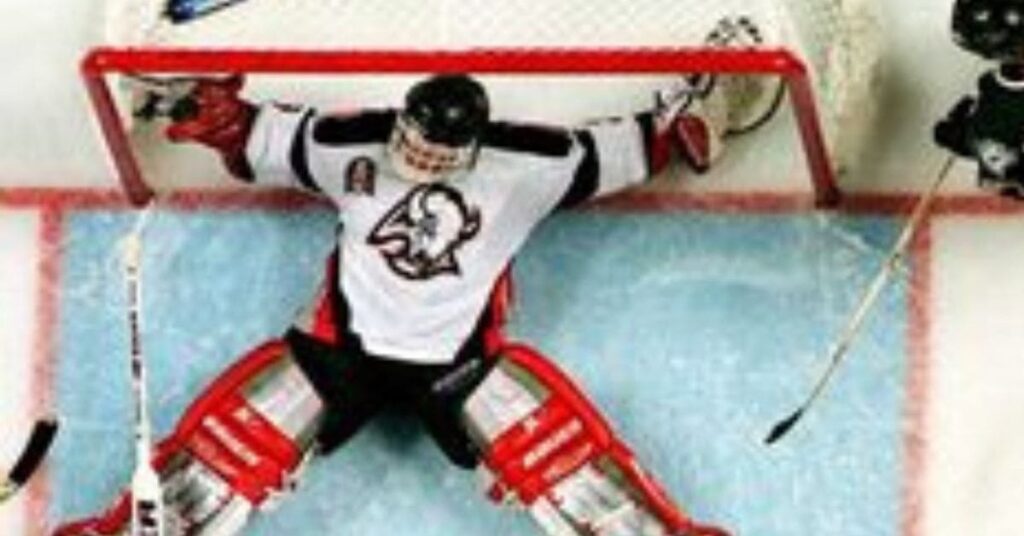
What philanthropic causes or charities does Dominik Hasek support?
Hašek’s charity initiatives include launching the Dominik Hašek Youth Hockey League/Hašek’s Heroes, an organization that helps impoverished children in Buffalo play hockey.
What businesses does Dominik Hasek own?
Dominik Hašek has ventured into various business endeavors in his career, including the launch of Dominator Clothing, a sportswear brand. However, it’s worth noting that the Dominator Clothing brand faced challenges and eventually went out of business in 2008 due to low sales.
What brands and endorsements does Dominik Hasek have?
Dominik Hašek has not been extensively associated with specific brands or endorsements in his career. Unlike some athletes who secure lucrative sponsorship deals with prominent companies, Hašek’s focus has primarily been on his professional hockey career and, to a lesser extent, his business ventures such as Dominator Clothing. While he may have had endorsement deals or partnerships at certain points in his career, they have not been as widely publicized as those of some other athletes.
How many awards has Dominik Hasek won?
One of Hašek’s most notable achievements is his six Vezina Trophies, awarded to the NHL’s best goaltender, which he won consecutively from 1993 to 2001. Additionally, Hašek’s two Hart Memorial Trophies, awarded to the league’s most valuable player, further highlighted his importance to his teams.
Internationally, Hašek achieved significant success with the Czech national team, notably capturing the gold medal at the 1998 Winter Olympics in Nagano, Japan. This was during a stellar performance during the tournament, including a memorable shootout victory over Team Canada in the semifinals.
Hašek’s list of awards also includes multiple Stanley Cup championships, which he won as a member of the Detroit Red Wings. In addition to these major awards, Hašek earned numerous other awards in his career, including All-Star selections, recognition as the NHL’s leader in save percentage and goals-against average, and induction into multiple halls of fame, including the Hockey Hall of Fame.
NHL Awards:
| Award | Year(s) Awarded |
|---|---|
| NHL All-Rookie Team | 1992 |
| William M. Jennings Trophy | 1994, 2001, 2008 |
| Vezina Trophy | 1994, 1995, 1997, 1998, 1999, 2001 |
| NHL First All-Star Team | 1994, 1995, 1997, 1998, 1999, 2001 |
| NHL All-Star Game | 1996, 1997, 1998, 1999, 2001, 2002 |
| Hart Memorial Trophy | 1997, 1998 |
| Lester B. Pearson Award | 1997, 1998 |
| Stanley Cup Champion | 2002, 2008 |
Czechoslovak and Czech Awards:
| Award | Year(s) Awarded |
|---|---|
| Czechoslovak First League Best Goaltender | 1986, 1987, 1988, 1989, 1990 |
| Golden Hockey Stick | 1987, 1989, 1990, 1997, 1998 |
| Czech Sportsperson of the Year | 1994, 1998, 2001 |
| Czech Hockey Player of the 20th Century | 1998 |
| Czech Extraliga Champion | 2010 |
International Awards:
| Award | Year(s) Awarded |
|---|---|
| EJC Best Goaltender Award | 1982 |
| WJC Best Goaltender Award | 1983 |
| WC All-Star Team | 1987, 1989, 1990 |
| WC Best Goaltender | 1987, 1989 |
| Olympic Games Best Goaltender | 1998 |
| IIHF Hall of Fame | 2015 |
| IIHF All-Time Czech Team | 2020 |
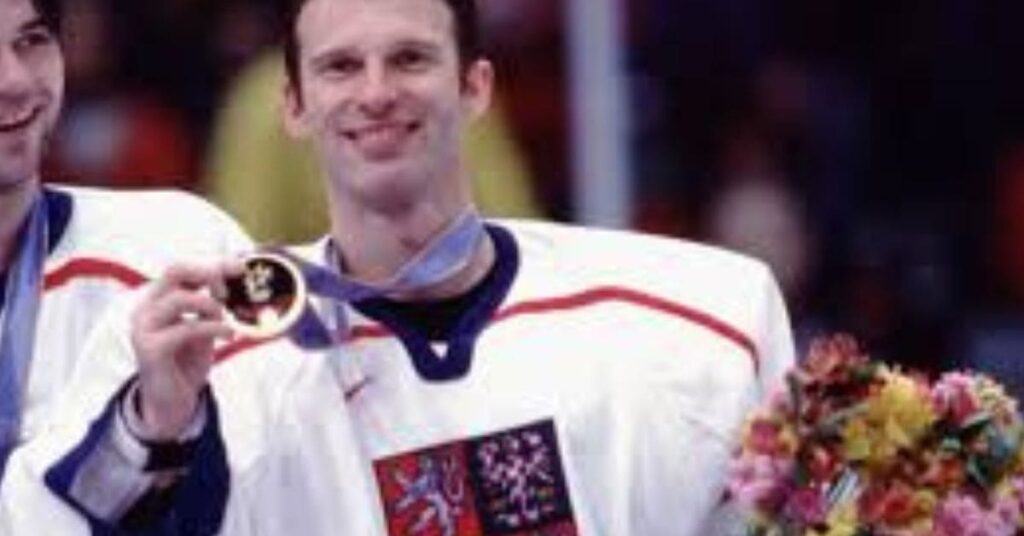
Did Dominik Hašek Begin His Career as a Skater?
- Interestingly, Dominik Hašek, known for his legendary goaltending skills, initially started his sports journey as a skater. He played competitive football as a midfielder and even became a junior tennis champion in Eastern Bohemia before transitioning to ice hockey.
How Did Hašek Spend His Free Time?
- When not guarding the net, Dominik Hašek enjoyed playing squash and inline hockey. These recreational activities provided him with a well-rounded approach to sports and likely contributed to his agility and reflexes on the ice.
Did Hašek Have a Talented Brother?
- Yes, Dominik Hašek’s older brother, Martin Hašek, also pursued a career in sports as a professional football player and later transitioned into coaching.
Who was better, Hasek or Roy?
- In 18 seasons of play, Patrick Roy managed to achieve a save percentage higher than .920% in just three instances. This statistic is significant as a .920% save percentage is commonly considered the benchmark differentiating good goaltenders from those deemed exceptional.
Did Hašek Have Any Superstitions or Pre-Game Rituals?
- Yes, Dominik Hašek was known for his unique superstitions and pre-game rituals, including his meticulous preparation of his equipment and a routine that he followed religiously before each game. These rituals were believed to help him focus and mentally prepare for the challenges on the ice.
Was Hašek Known for Any Signature Moves or Techniques?
- Dominik Hašek was renowned for his unorthodox goaltending style, characterized by his acrobatic saves, lightning-fast reflexes, and unconventional techniques. His ability to contort his body and make saves in seemingly impossible situations earned him the nickname “The Dominator” and made him a nightmare for opposing shooters.
What Was Hašek’s Impact on the Development of Goaltending Techniques?
- Dominik Hašek revolutionized the goaltending position with his innovative playing style, inspiring future generations of goaltenders to think outside the box and embrace creativity in their approach to the game. His unconventional techniques and fearless mindset paved the way for a new era of goaltending excellence.
Did Hašek Have Any Memorable Moments or Records That Stand Out in His Career?
- Dominik Hašek’s career is filled with memorable moments and records as one of the greatest goaltenders of all time. From his multiple Vezina Trophy wins to his historic .922 career save percentage, Hašek’s accomplishments continue to set the standard for excellence in the NHL goaltending fraternity.

